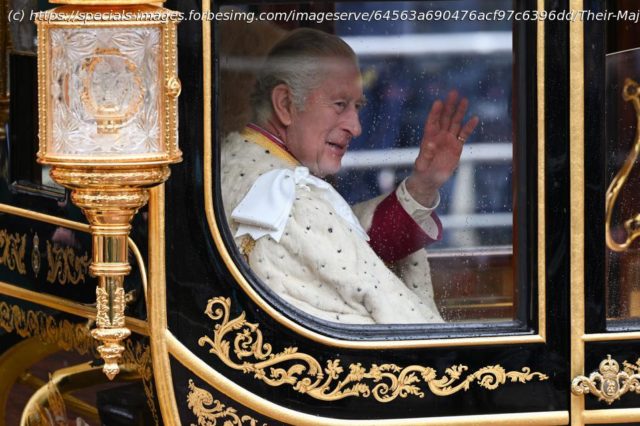It’s done, Charles III and Queen Camila have been fully invested and adorned with their crowns. Fascinatingly, the service was at the same time a successfully inclusive portrait of modern Britain. Only the British could pull off a bridge like that. Here’s how, and why.
The much-ballyhooed ‘slimming’ of the monarchy and the coronation ceremony itself worked to good effect on Saturday: Charles, his court, Parliament, the Prime Minister, the Cabinet, the executive prelates of the Church of England, Scotland Yard, MI5, MI6, the keepers of the Crown Jewels, the musicians and choirs in the Abbey, and not least, the British Army, Navy, Marines and Royal Air Force were in lockstep, the throngs were camped out, the gilt coaches and their teams rolled both toward the Abbey, and away from it, with briskly measured gait, postillions almost unmoving. The midnight rehearsals of the last weeks and the deeply polished Household Cavalry tack only added to the intensity and dark glamor of the runup.
It paid off. In the doing, the coronation of Charles III was bright, direct, seamlessly formal and informal in turn. In its several major and minor breakings of classic form, the leading prelate, Archbishop Justin Welby, deftly quoted the now-classic Elizabeth II declaration of a lifetime of service.
All coronations are not alike. The last four British coronations occurred in the first half of the 20th century, punctuated in 1953 with Elizabeth II’s, and that celebration was arguably the most well-planned and extravagant of them all, infused as it was with Europe’s post-WWII reconstruction energy, and that extraordinary positivity of the baby boom among the former Western allies. But each of those four coronations, chiefly that of Elizabeth’s father (1937) and grandfather (1901), as well as her own, took the bones of the form set down by the monarchs in the 19th century. Which is to say, that of Victoria, in 1837. This is why it can be argued that Elizabeth’s coronation coronation had a much more direct aesthetic, religious and political connection to that of her great-grandmother than it did to this weekend’s coronation of her son.
As Victoria’s coronation occurred, the Napoleonic Wars were fading in memory and none of the royal houses of Europe had yet been de-fanged by either of the 20th-century’s empire-destroying world wars.
Home
United States
USA — mix Charles’ Briskly Modern Coronation Sets Forth His Agenda: To Reunite A Fractious...






